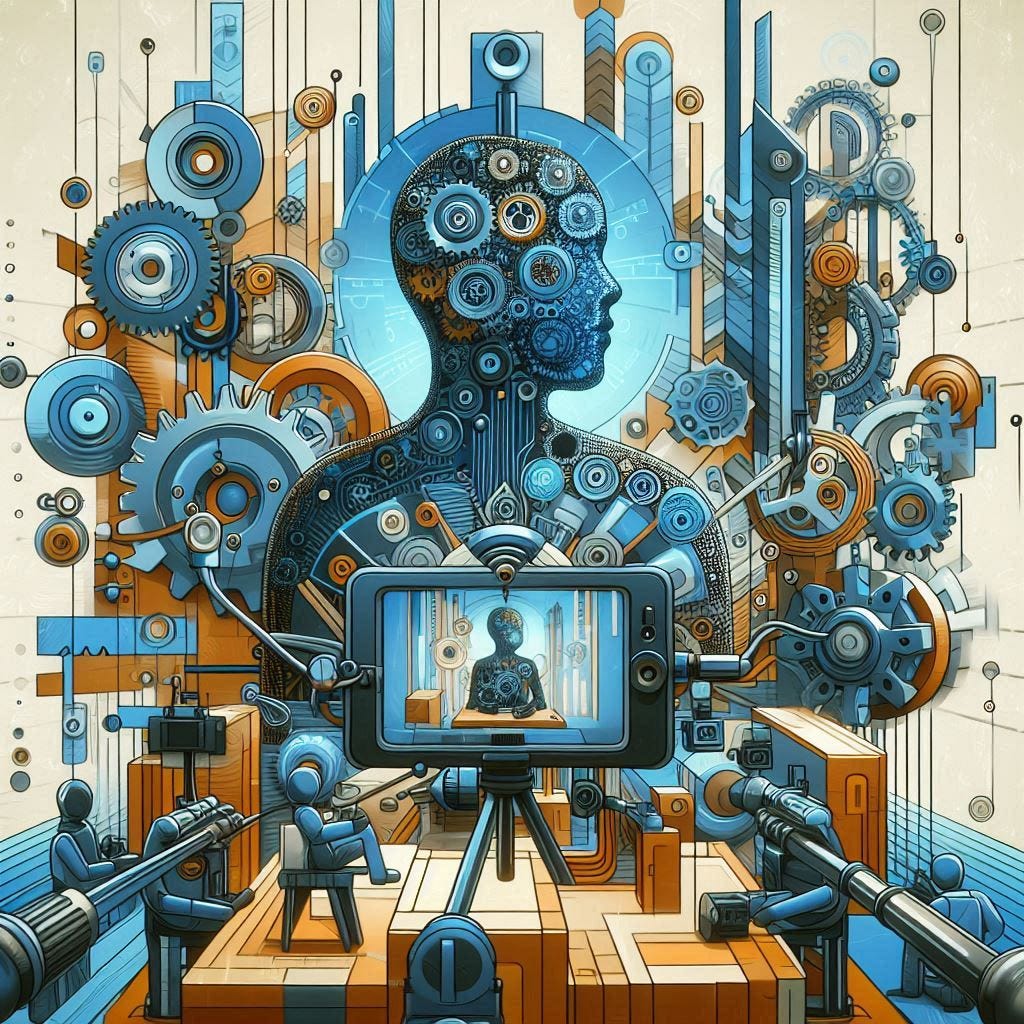The Job Market Insider
Mastering Asynchronous Interviews for Competitive Advantage
Dear Subscribers,
Welcome to this week's edition of The Job Market Insider! I hope you're all thriving in your career and job search journeys.
I've noticed a concerning trend: 82% of companies now use asynchronous video interviews, but most job seekers continue approaching them like traditional face-to-face conversations. This disconnect creates both a challenge and an opportunity for savvy candidates.
Many job seekers are concerned about these "one-way" interviews, so I've expanded my recent LinkedIn thoughts into this comprehensive guide. Whether you're actively job hunting or simply future-proofing your professional skills, these insights will help you stand out in an increasingly video-centric workplace.
Why Asynchronous Interviews Are Different (And Why That Matters)
Asynchronous video interviews—where you record responses to preset questions without a live interviewer—have rapidly evolved from novel to normal in hiring processes. Most candidates miss out on the fact that these interviews evaluate fundamentally different competencies than their live counterparts.
Beyond assessing your answers, recruiters analyze:
Your communication clarity without conversation cues
Your professional presence when nobody's nodding along
Your ability to engage confidently without immediate feedback
Your technical proficiency in creating professional video content
These skills have become increasingly valuable as remote and hybrid work environments become the norm. The candidate who masters asynchronous communication enjoys advantages beyond the interview process.
The Technical Foundation: More Important Than You Think
Poor technical execution can undermine even the most brilliant content. Before you focus on crafting perfect answers, establish these professional fundamentals:
Connection and Equipment:
Ensure a stable internet connection (consider using ethernet rather than Wi-Fi)
Test your microphone for clear, crisp audio (external mics dramatically improve quality)
Choose a webcam position at eye level (stack books under your laptop if needed)
Environment and Staging:
Create soft, diffused lighting from the front to eliminate unflattering shadows
Select a simple, uncluttered background that keeps the focus on you
Minimize potential interruptions and background noise
While these elements might seem superficial, they significantly impact how recruiters perceive your professionalism and attention to detail. Your technical competence becomes part of the evaluation in asynchronous formats.
Structuring Responses That Make an Impact
Without a live interviewer guiding the conversation, response structure becomes critical. The most effective asynchronous answers follow a clear pattern:
Brief introduction (5-10 seconds)
Acknowledge the question
Signal your approach to answering
Concise main points with specific examples (45-70 seconds)
For behavioral questions, use an adapted STAR method that's more concise
For situational questions, briefly outline your thinking process and decision criteria
Memorable conclusion (5-10 seconds)
Reinforce key takeaways
Add a brief forward-looking statement if appropriate
Unless the instructions specify otherwise, the response should typically take 60-90 seconds. Practice crafting responses that deliver maximum impact in minimal time. Precision matters more in asynchronous formats than exhaustive detail.
Overcoming the Engagement Challenge
The greatest challenge in asynchronous interviews is creating engagement without interaction. When speaking to a camera instead of a person, energy levels naturally drop, and responses can feel mechanical. To counteract this:
Imagine speaking to a specific person rather than a device
Maintain eye contact with the camera lens, not the screen showing your image
Vary your vocal tone and pace to create natural speech patterns
Incorporate appropriate hand gestures and expressions to convey enthusiasm
These subtle adjustments transform a recorded monologue into a compelling conversation. Energy that feels slightly elevated to you often appears appropriately engaged to viewers.
Practice With Purpose: The Simulation Strategy
Effective preparation goes beyond simply rehearsing answers. I recommend this simulation approach:
Create a mock interview environment identical to your planned setup
Record complete practice sessions with timed responses
Review recordings critically for both content and delivery adjustments
Focus mainly on your opening 10 seconds (research shows impressions form remarkably quickly in video formats)
Develop a brief "buffer" ritual before recording each answer to reset your energy
This structured practice approach helps you identify issues that aren't apparent through mental rehearsal alone.
Beyond the Interview: Future-Proofing Your Career
As remote and hybrid work becomes standard, video communication skills increasingly transfer directly to daily job responsibilities. The professionals who master asynchronous video formats gain advantages that extend throughout their careers:
More impactful virtual presentations
More engaging team updates
More effective client communications
More professional social media content
Investing time to develop your video presence now creates compound returns across all these domains. The techniques that make your interview responses compelling make you more effective in virtually every professional communication context.
Your Next Steps
If you're preparing for an asynchronous interview in the coming weeks:
Audit your technical setup and make necessary improvements
Practice the structure outlined above with 3-5 common interview questions
Record and review your practice sessions
Develop your engagement strategy before the actual interview
If you're not currently interviewing, consider:
Upgrading your video presence for team meetings and presentations
Creating a simple "home studio" setup for professional video content
Practicing structured communication in your current role
Let's Connect Further
How are you experiencing asynchronous interviews in your job search? What challenges have you encountered with video-based professional communication? Reply to this email or join the discussion in the comments—I read and respond to every message.
Until next week,
Lee Gamelin
Strategic Job Search Skills Training and Development Specialist
P.S. If you found this newsletter valuable, please forward it to someone in your network who might be preparing for interviews. And if someone forwarded this to you, subscribe below for weekly insights from The Job Market Insider on modern job search strategies.
#AsynchronousInterviews #VideoInterviewTips #RemoteHiring #JobMarketInsider #CareerCommunication



